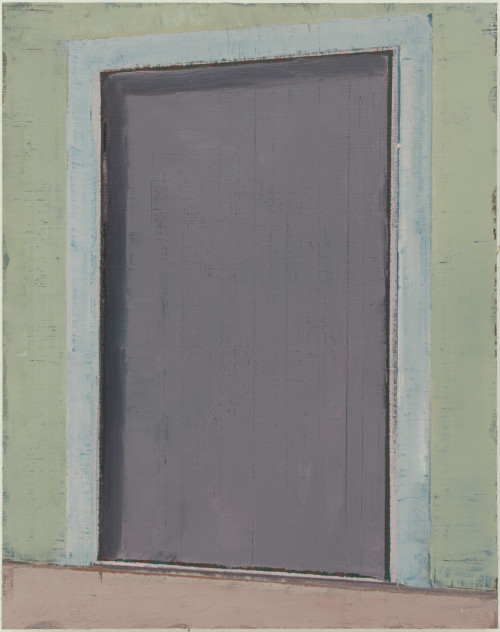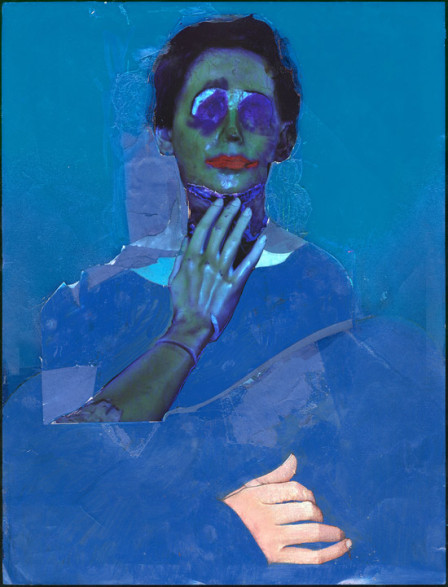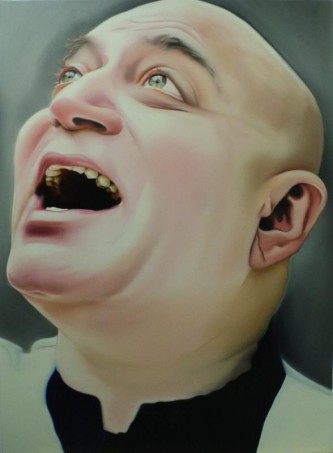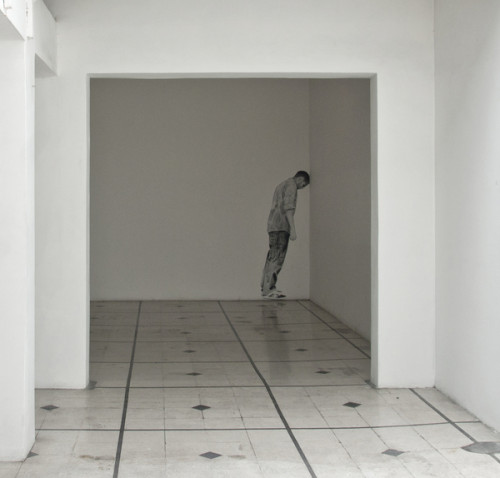
Pius Fox
“The female, the lumpen-proletariat, the foreign; the animal and vegetative; the unconscious and the unknown; the criminal and failure—all that has been outcast and vagabond in our consideration of the figure of Man—must return to be admitted in the creation of what we are.”
Robert Duncan
“No interpretive skill in the world can in fact eliminate ideal objects from our speech and thought.”
Edmund Husserl
“The wealth of societies in which the capitalist mode of production prevails appears as an immense ‘collection’ of commodities; the
individual commodity appears as its elementary ‘form.’ Our investigation therefore begins with the ‘analysis’ of the commodity.”
Karl Marx, Chapter One Capital
“Can this planet be entrusted to those who watch crap on their television screens, day after day – both Hollywood propaganda production, and news propaganda briefings? Can anything that comes from the West be taken seriously, after centuries of lies and murder?”
Andre Vltchek
I read two stories about people claiming to have an Aspergers condition, but in reality not having it. Apparently this has come up in divorce cases recently. How common this is remains an open question, but I think this is sort of fascinating because it allows one’s basic sense of overload, narcissist tendencies, and lack of empathy to be something over which one has no control or responsibility. This from New York Magazine:
“It’s become more frequent in the last five years,” confirms a Connecticut divorce lawyer who says she has represented parties in several cases where a wife accused the husband of being on the spectrum. “It’s women complaining, ‘He lines up my towels perfectly. He complains if his shoes aren’t lined up right.’”
Men have caught on and, in a kind of inverted gaslighting, begun to describe themselves as having Asperger’s as a way of controlling their spouses. “Having Asperger’s-like syndrome does not give you Asperger’s,” says David Schnarch, a Colorado-based couples therapist. “Having a big belly does not make you pregnant. I’ve not seen a single case of what I would consider to be diagnosable Asperger’s. But I have seen any number of cases of wives accusing husbands of it, any number of cases of husbands claiming to have it.” It’s the new ADHD, he says. “The wife doesn’t want to accept that the husband knows what he’s doing when he’s doing something she doesn’t like.”
There was even a riff on South Park where Cartman thought he heard *Ass-burgers*, and etc.
This does suggest that the contemporary therapy culture is simply finding new labels for various kinds of de-socialized behavior. As the New York Magazine asks, ‘is everyone on the Autism spectrum’? The answer is no, and more, the idea of spectrum is, I think, pretty clearly faulty. But in a society of acute narcissism, the idea of justifying your own sadistic tendencies, is very appealing. And that is really my point; the culture as a whole is ever more cut off from their own emotions, and living in an ever more shrunken perceptual world, and additionally, losing the basic cognitive capacity to *interpret* complex narrative and image. They are desirous of a cartoon world, one of simple foregrounded facts, and simplified or erased background and backstory.

Andro Wekua
And the idea of control, the idea of controlling the emotions, has evolved into something that mirrors other contemporary ideas, ones which have changed and evolved over time, that seem oddly linked to a new tension that centers around containment. Or maybe it is more accurate to say that mental maps, or images, have become mini Panopticons. People increasingly observe themselves as they might observe a prisoner from the standpoint of the guard. And I suspect this is partly the influence of film and TV. And it also feels related to the Austism question. Just the form itself, it is the screen dominant system of experiencing psychological affect. The darker side of how this works, or rather *one* dark side of how this works, is what Gearoid O’Colemain calls (in response to the Paris bombings) a coming “intellectual terrorism”. Radical voices, politically radical, but also artistically radical, are going to be disciplined by the mainstream media, and governments. Calling everyone a *conspiracy theorist* as a pejorative term was the front edge of this tendency. But the very conscious containment of radical dissent is likely to pass unnoticed for many because they are already primed to mis-read such propaganda campaigns, but also on individual and micro levels those who view psychology as a series of processes tuned to containing and restraining and limiting emotions — wayward or uncontrollable emotion — are going to feel comfortable in this sort of diluated politics of self. And the equating of foreigness and threat with the emotions seems logical. My emotion is the *other*.
The open and overt propaganda of U.S. television drama now (let alone news) is rather shocking, actually. A new show called Agent X (Sharon Stone as the Vice President…sort of telling you most of what you need to know regarding its quality) made a tacit aside about the evil of Edward Snowden. I mention this particular one (I could always use Madame Secretary or a new Serb bashing drama from the UK, The Last Panthers, which is worthy a deeper analysis for it seems to be a long string of *prestige* cues, signifiers for quality without actually having any) because the message came as an aside. Ironic even. It was delivered with a wink. It was bro-ganda as it were. Probative male insider cool — fascism as cool, and patriotism as cool. This never, by the way, quite works even for the most wonky dullard frat boy or farm boy — because while one can sell Brooks Brothers suits as cool, you can’t sell conformity as cool. What you CAN sell is fear, of course. And my sense, which I state as almost anecdotal, is that most of white America is very scared. And perhaps an unpacking of that fear is worth doing. But for now I am interested more in how the post modern epoch grasps itself emotionally. How do the post modern maps for the emotions work? Or maybe the emotional GPS?

Deutssche Autobahn (“Reichsautobahn”). 1930s.
“However, if the person is unaware that the message is metaphorical, a pathology is engendered. Furthermore, with schizophrenics, communication about communication-the meta-communicative system-is collapsed,and the types of messages are confused. Schizophrenics are unable to understand what the messages sent really mean, tend to become obsessed with what they imagine is a “hidden meaning,” and set out to prove that they will never be tricked. Another response is to receive every message literally and reject all meta-communication. Yet
another response is to ignore everything in an attempt to avoid situations that require responses. In this latter situation, the person ends up abandoning all interest in the outside.”
Kojin Karatani
This phenomenon of certain illnesses and conditions becoming ‘fashionable’ seems symptomatic of several things. First, that there is a large number of people suffering a kind of Munchausen’s syndrome. But it’s not exactly that because, so I think, not enough self consciousness is involved. What I mean is that the desire to be special, to an Aspie for example, is a disorder connected at a very deep level with Capitalism. Reification cuts through all of this, exchange value.
Here is a recent headline from the Daily Mail in London:
“Why ARE so many people being labelled bipolar? More and more celebrities say they have it, but here a top psychiatrist warns the disorder is far too readily diagnosed, leaving many trapped on ‘zombie’ pills.”
Dr. Joanna Moncrief warns of the overuse of anti-psychotics. But the more interesting aspect surfaces in a series of related articles about an epidemic of faked conditions among high school students. The coerced conformity of thought has a numbing quality. And again, in such conditions of artificial difference, the loss of sense of self is hardly surprising.

Daniel Pitin
Ernst Bloch wrote back in the 1930s, about dreams, and suggested that the resistance to Freud and dream analysis had to do with an entrenched bourgeois morality. “…hence the reluctance to allow these dream images to be turned into crime stories of one’s private self.” He added, interestingly, that the prophetic dreams of antiquity seem immune from such ideas. This moralizing reluctance gives birth to masquerade, to the processes of concealment. The sexual taboos involved result, at the end of this logic, in hugely complex lines of association where virtually any symbol is related to another and all to sexual symbology. This exists in Ferenczi and Jung both, as well as Freud. And as Freud said, the dreamer does not know what he knows. The connection to Capitalism has to do with something Kojin Karatani wrote, quoting Moses Hess:
“Hess next points out that this sort of relation between man and nature
necessarily takes place by way of a certain kind of social relation between
people. Th is too consists of a kind of intercourse. In this case, Hess cites
as modes of intercourse plunder (“murder- for- gain”), slavery, and the traffic
in commodities. In his view, as traffic in commodities expands, this mode
replaces plunder and slavery (that is, the use of violence to steal the products
of others or to force them to labor), yet in the end this amounts to carrying
them out in another form, through the means of money. This is because
a person who possesses money is able to coerce others.”

Franky Verdikt, photography.
Capitalism changed the idea of production in a sense. Production took on a malignant aspect in its accumulation of waste. The ecology of Capital has now reached a breaking point. But my focus here is on the psychological malignancies of Capital. And of this deceptive notion of progress (and it is worth noting that even now in some left circles, or pseudo-left, the addiction to progress remains intact).
“I now believe that traditional approaches to the teaching of art appreciation leads students towards refined consumption rather than advancing their critical thinking and creativity. And further, I believe that traditional art schools are essentially craft
schools at their most primitive level, and finishing schools when they are at their best.”
Luis Camnitzer
Now Camnitzer’s short essay on arts education makes a number of relevant points in all this. One is that arts education, or art appreciation, has always been taught in terms of ‘looking at’ a work of art in order to better the viewer’s skills in deciphering other aspects of society. Improve performance, as he says, in other fields (business). Allow me to quote Camnitzer again…

Riyas Komu
“Whenever we ignore the ensuing challenge, we reaffirm the dominating idea that art-making is reserved for a chosen few, that art is based on therapeutic self-searching, that anything an artist does is art, that whoever doesn’t understand an art product is a Philistine, and that art is an industry by and for a minute fraction of the world’s population. In fact, this is the exact opposite of a socialism of creation. We are in fact confirming the distribution of power instead of seeking an egalitarian redistribution.”
Camnitzer advocates what he calls *art thinking*. A meta discipline meant to awaken. Rather than as a form of production. And as he adds, science is a sub-category of art. And I would have to agree. However, there is also something wrong in what Camnitzer writes. And it has to do with a mis-reading of elitism. Not *understanding* a work of art might well make one a philistine. For philistinism isn’t a phantom. The problem is the idea of a ‘chosen few’, not the artwork. What the socialism of culture should imply is that radical vision is part of a dialectic of art; that art’s purposelessness is its most radical quality, and that under Capital culture is meant to be critical, and to be critical means difficult (almost always). Art isn’t the problem, but an ability to discriminate is. The society is elitist, but having taste is not elitist, and it would seem important to separate the two. Perhaps he knows this, but it’s not clear.
Today, the reliance on information processing has as its underside a kind of narrowing of experience. The desire for specialness in a society of profound conformity is the reaction to this coming assault on dissent and creative thinking in general. The Imperialist West today cannot tolerate questioning. There is an increasingly open demand for obedience. Throwing out the term ‘conspiracy theory’ is just the most pristine example. There is a total uniformity of opinion in mass media, both in corporate news and in Hollywood. Here, remember, as Bloch wrote…“The longing and love of the child for its mother is frustrated by strange faces, it is unable to channel its libido, which cannot find an object. So it turns inward and is discharged as anxiety even in adulthood; the consequence is as follows: all repressed wishful emotions turn into phobias in this realm of the unconscious.” The fear of death, thought Freud, was the ego surrendering because it is rejected by the super-ego. The super-ego now functions as the Father of an earlier stage. So this is all traced back, finally, to the primordial separation from the Mother. And it should be noted that this does not imply that there is not a concrete and material world of threat. The wish is turned into its opposite, causing anxiety, and eventually despair. Bloch touches on something else here, too. The wish fulfillment fantasies of anxiety; in which a certain faux-darkness, or manageable darkness which alleviates a second order of fear. I wonder if the appeal of suspense films, in fact, is not partly the wish fulfillment of anxiety being reproduced safely. And it’s possible if this was in Freud’s era expressed in the Gothic novel, it is expressed in more mediated form today by zombie films and post apocalyptic narratives (as well as slasher films).

Gavin Hipkins
The desire to be special, even if that means a convenient sort of *condition*, is laced with elements of the uncanny. Even gluten intolerance or ADHD. Gluten avoidance becomes not unlike the attempt to find comfort in the scary witches home in the forest. But one thing that is unacceptable is to question the system that produces, say, toxic food and manufactures a number of highly dubious vaccines, and which coerces the individual daily, hourly, with solicitations and titillation. What level of sanity can be reached in a culture that excuses the death of children as collateral damage? The militarism that is so applauded in Hollywood, and across all entertainment platforms, is reproducing aggressions that the psyche works overtime to neutralize, but is forced to disguise as something else in order to do so. I noted the other night that preceding the basketball games of the NBA came the playing of the French national anthem. There were no Kenyan anthems, or the anthem of Yemen. And yet I’d guess there are more African born players than French.
Now, just as a side bar observation; I’ve noted on the left a reflexive need for prescriptive narratives of moral improvement, rather than an engagement with descriptions of Capitalist carnage. That individuals are made to crave that which afflicts them is often condemned as a reactionary representation. End side bar.

Jack Smith
Freud late in life wrote that external dangers had to exist for those strange faces or shadows of menace to be other than neutral experience for the infant. Bourgeois society is set against itself, and today the margins for bare survival are ever shrinking. The anxiety of economic insecurity is acute for millions of people who would self identify as middle-class. And this is all set against the constant shaping of narratives in leisure time activity (the NBA playing the French anthem). Leisure time is permeated now with obligations. One cannot watch a football game without either betting on it, or playing *fantasy football*. Major newspapers run the point spreads of every game. Even college games. Yet gambling is officially illegal. But such symbolic substitute resistance takes the place of real resistance. The individual who believes he or she has Aspergers is expressing that ambivalence of the post modern epoch. For as seductive as being special night seem, these people also hold exaggerated and sentimental opinions on such conditions. These areas become symbolic substitutions for larger crimes of state, usually. Fifteen hundred dead children in Yemen is barely examined by the same people who demand one not offend those with Autism. This is not to say ableism is not genuine. It is to point out the comfort level of targeting certain concerns the better to ignore others. And this often feels, on an instinctual level, like people who have disproportionate affection for their cats. Because it is obvious that all discrimination or surpremacism is wrong. Full stop. (And nobody I know cares as much for animals as I do, probably). Rather this is about what Freud called the merging of opposite drive feelings. As Bloch says, anxiety and wish coincide in the unconscious — but also in the conscious mind; as in the case of the hypochrondriac and obsessive pessimist (Bloch’s examples). One desires for the counterfeit non-wish to be fulfilled. But hypochrondria entails, often, acute guilt. For example, the person has an adulterous affair and develops a phobia about sexually transmitted diseases. There is, among certain psychiatrists, a belief that there is a neurological component to hypochrondria, as well as OCD. The neurology, they admit, is probably linked to stress. So the circular argument continues here, but its clear enough that a need for recognition, for not being invisible, is about more than protein deficiencies. More likely is a kind of hypochrondria in physicians themselves. Classically, hypochrondiacs cannot be reassured. How much is guilt, how much desire, is open, but the fact that narcissism plays a huge role in all this is undeniable. The desire to be gluten intolerant or an Aspie is also linked to a kind of sadism. At the least it’s passive-aggressive. Hence the exaggerated sense of offense if questioned. The entire idea of Autism as a spectrum is questionable, in my opinion. But that said, severe autism is one in which the sufferer cannot articulate or communicate they have such a condition. Mostly because they simply don’t communicate at all. In all this there is a relationship to death, the unconscious seeking of death which results in ego fragmentation, and re-stimulates fears of body fragmentation.

Matthias Olmeta, photography.
The de-socialized aspect of Aspergers, for example, is attractive to a populace ever less comfortable with social discourse. Two generations now multi task all their waking lives, essentially. An inability to talk to people is justified if a condition explains it.
So, when I suggest that the world is perhaps experienced now as if one were observing it on CCTV on from the center of a mini Panopticon, this is directly part of a conditioned need for control. And loss of control is converted to phobias of control or loss thereof.
To return here to pedagogy and arts, there has been such a subsuming of the arts by the hugely conformist bureaucrats of institutional culture that the elimination of radical expression is likely going to be welcomed. Sarah Shulman is right when she pointed out that the AIDs epidemic killed off a generation of artists in New York resulting in a certain middle brow conformity taking over institutional funding. The gentrification of ideas. And when Penny Arcade points to gentrification as just another form of erasing history, she is also right. Because culture being domesticated runs alongside what Colmain articulates in the aftermath of the Paris bombings. A new state war on radical opinion, and on radical expression. And there is no backdrop now to foster resistance. Or very little anyway. And in one way the loss Shulman and Arcade point out is felt in ever widening ripples that has influenced a good deal of post structuralist thinking. The vague mushy headed reactionary babble of a Zizek, or the elitist expression (under cover of anti elitism) one often finds in Ranciere. The fact that there is no Jack Smith now, or that in place of Smith we have Marina Abramovic or Cindy Sherman is very telling. There is a political link between Jack Smith and recognizing that bombing children is wrong.

Pieter Vermeesch
This new sensibility of conformity will accept dead Arab children, but shriek in righteous indignation at indecent clothing for toddlers or pre schoolers. They will form mini and fluid metaphoric lynch mobs for parents who refuse vaccination, for example. This has little to do with my thinking sexy dresses for six year olds isn’t vaguely disgusting, or that most vaccines are probably good. It is about the predisposition to police (verb). To keep your eye on that CCTV monitor. Make sure no inmate in the yard is getting away with contraband. The Puritan sub-text in these lynch mobs is the crucial point. The concern for the well being of six year olds is not the point for such policing, it is purely a kind of pathological narcissism. It has to be, in the end, about the policers themselves. This is the theatre of public morality in a society of unrelenting coercion. It is the structure of a society that applauds stigmatizing. And shaming. The moralizer is always expressing something close to cruelty. And critical dialogue about, again for example, corporate big pharma and its medical dumping ground in the third world is important, but the theatre of morality is almost de-facto interested in reinforcing the values of the status quo. Any movement of *outing* the individual has a dangerous element of domination about it, and a tacit rejection of outing the system.
“One of the difficulties that arose with fixed settlement was
the need to coexist not only with other people but also with the dead.”
Kojin Karatani

Cesar Del Valle
Magic came into existence once tribes became fixed in one location. Nomads had no need for Magic. In a society today of complete reification, of the commodity form, magic has migrated to science…on one level anyway. Karatani interestingly substitutes nomadic freedom for the Ur-father in Freud’s anthropology. The return of the repressed was not the murder of the Father but the equality of nomadic clans.
“In Freud’s theory of clan society, what returned was the murdered father. But in my view, what came back in this “return of the repressed” was the nomadism (freedom)— since equality came with nomadism— that was abandoned with the adoption of fixed settlement. This explains why the principle of reciprocity functioned with the force of a threat.”
This is interesting, even if one might argue with it (or not) because there is something worth examining in class struggle — what Marx saw in the battle between those who owned the means of production and those whose labor was exploited — in light of this sense of place I continue to talk about. The contemporary insanity of Western society is about indoctrination and conditioning, and a sense of belonging no particular place. The theatre of public morality now looks to ignore class conflict, and to substitute *conditions* and *syndromes* which are largely discussed as if they floated above history. Everything produced in the propaganda machine of Hollywood contains the assumption that life moves forward, interrupted only by events falling out of the sky. (In all those articles about fashionable mental illness, there was very little if any discussion of causes, and if there were, they were very superficial. Nothing of social history and politics is EVER to enter mainstream culture writing.) And usually these events contain inherently bad people (Serbs, communists, Chinese, Arabs et al). A society that reads itself as if in one of these propaganda narratives will naturally also become blinded to their own sense of location, and insensitive to the architecture and space around them. And, this conditioning, the ahistorical indoctrinating, must help repress much of each individual’s history as well. For the individual, if nothing else, is a reminder of the past. An obsession with youth is partly a denial of time passing. Into this artificial field of vision (literal and metaphorical) comes the simplified cartoon narratives attached to events such as the Paris bombings this week. In the corporate media version the individual must grieve. One way to do that is to change your facebook avatar to the tricolore. Then to deplore violence, even while in the same breath worship the violence of those like yourself. The narcissism of the West today is often expressed by people saying they *support* something or someone. What that support means or is made up of, is not important. Only that its a fashion accessory, much like having Aspergers or an eating disorder. So tricolore avatars are really, mostly, fashion statements.

Boris Karloff on set of Bride of Frankenstein. 1935.
If Karatani is at all right about the correlation between settlements of a permanent kind and the rise in funerary cults, then the architectural expression of the return of the repressed becomes hugely important. It is also a bit like Rene Girard’s take on sacrifice. The intersection with a culture in which the *individual* is both privileged ideologically, and ideally, while at the same time leaving most people with deep feelings of panic, anxiety, and growing invisibility. The ambivalence of both striving for success and recognition, and the self loathing of failure, and almost inevitable inadequacy. The popular cultural expression of this is now one of endless defilement of the dead. It is a curious angle to the zombie genre. The return of the repressed is nomadic freedom, that forgotten archaic memory trace before a sort of tyranny of the dead. The empire of death was material, and the fascination with a constant repetition of violence *to* zombies (mostly) suggests the same repetitions of empty rituals of obedience at work and home. The Walking Dead in this light looms as the embodiment of several strands of repressed material. The fear of immigrant hordes, the filth, lack of hygiene, and the impossible language. The *lack* in zombies, in terms of speech, is notably distinct from, say, Frankenstein’s monster’s lack. The soul of the Victorian Gothic monster is foregrounded. But here also the sense of author’s physical infirmities is possibly an intriguing sub category (Baudelaire and Zola, Turgenev and Robert Louis Stevenson, et al). Illness was integrated into both landscape and character, as a natural part of life.
“The case of Flaubert is of some relevance. Here, if anywhere in this whole unhappy history of neurosis and hypochrondria, was a man who literally destroyed himself. His illnesses, ranging from rotten teeth to what was apparently a form of hysterical epilepsy, characteristically manifest a form of violence against the self.”
Peter Ackroyd

Jorge Sasse, photography.
The linkage between creativity and physical impairment is well documented. And it should be noted that a good many 19th century men of letters were hypochrondriacs, by the modern definition. Still, like zombies vs Frankenstein’s monster, there is a telling distinction, or gulf between them. Zombie fascination far outstrips vampires, though that may be cyclical. The Zombie is the walking dead. The current vogue of zombie stories has to do with death. With the failure of repression, perhaps. With longing for a recuperation of death as something of a last adventure.
The desire to have a syndrome or condition that is fashionable is really only another aspect of mass cultural conformity. The media cartels today only reproduce, in large measure, what is already familiar. On the one hand the desire for a hit show means networks scour their resources and talent for something ‘fresh’ and ‘original’. While simultaneously knowing that, in large measure, popular taste is highly conditioned already. The television (more than film I think) ‘standard’ functions not much differently than most commodities. This standardization doesn’t really explain the allure of Zombies, however. And here I think the linkage to repressed material is certainly tenable as explanation, and more, that this repressed material becomes the raw material, in sanitized form (or concealed) of the new prestige product.

Adam Pendleton, installation.
Joyce McDougall noted that ‘psychosomatic’ patients’ major signs include paucity of dream life, reduced imagination and creativity, and a pragmatic or operational manner of dealing with others. The psychosomatic, or hypochrondriac, in nearly all cases will eventually suffer a loss of meaning. Emotions are experienced as childish and immature. This returns the discussion to *controlling* emotions. And such control is played out in the mental panopticon, the private CCTV screen in the mind. The diagnosis of alexithymia is quite similar. In the latter, however, there is no denial of emotion, or control of it, but rather simply its absence. Alexithymia sufferers are protecting themselves from what are near psychotic fears. These fears are often taught by the parents, but even if not, the prevailing fear is shaped by emotional contact with others. A belief that emotions are dangerous and harmful. These archaic fears are usually hidden, though, by a false self that exhibits a practiced normality. The culmination is a loss of meaning, a draining of difference and substance to experience. The psychosomatic and alxithymia patient treats speech less as communication, and more as a means to achieve some response in the other. McDougall calls it a primitive communication. So, the individual who feigns Aspergers, or claims it, is doing something not all that different from the genuine Asperger’s patient. Pretending to be an Aspie is a form of being an Aspie. This is maybe not quite totally accurate, but it contains something relevant. That something is the repetition of meaningless relationship dynamics. Relationships of no meaning. A society of emotional minimalism, one with only rote duties to perform, in states of distraction, is not going to be able to empathize with its victims, and more, will reflexively seek to intensify their plight. Be certain that refugees from Syria will be punished for being visible evidence of the West’s repressed self hatred and excoriating and psychically crippling fear.
Michael Fitzgerald and Mark A. Bellgrove write:
“Taylor (et al.) (1997) describes persons with Alexithymia as showing speech which is deficient in nuance, meagre in the use of metaphor and lacking affect, which of course is typical of the kind of speech that persons with Asperger’s syndrome produce. He also notes that their language is characterised by flatness, banality and is fact based. Krystal (1998) notes that “the associations of these patients are characterised by an almost complete absence of thoughts relating to inner attitudes, feelings, wishes, or drives; and a recounting in great and often boring detail, of events in their external environment and their own actions in this setting” (page 248) and they also show a decreased use of the pronoun I. They show clear impairment in symbolic function… Krystal noted that these patients with Alexithymia showed a “poorness and flatness of the contents of their communication” (page 246) as shown by their prosody and their monotone tone of voice. They can learn approximately socially appropriate responses but these are often excessively formal but these expressions lack nuance, lack proper prosody, are often very formal, and pedantic. They strike the listener as being somewhat unusual or overly formal. Speech and prosodic abnormalities are widely reported in autism spectrum disorders, including Asperger’s disorder (Shriberg et al., 2001). Such abnormalities are perhaps indicative of dysfunction to the right hemisphere (see below) in these disorders. Krystal also observes that patients with Alexithymia “give a boring recital of information with a mentality approaching that of mental retardation” (page 272). This description is again very similar to Asperger’s syndrome.”

Larry Louie, photography. (Great Mosque, Djenne, Mali)
Ronald F. Levant has coined the term “normative male Alexithymia”. A sub-pathological disconnect that is the product of socialization in adolescent males. There is no doubt truth in this idea, to the degree that the entire society is veering toward an emotional blindness. Aesthetically there feels a connection in this flatness in many people with how the uncanny is represented. Somewhere I seem to remember Freud writing of the ‘gaze of sightless eyes’. The uncanny which surfaces in response to objects which cannot be determined to be either inanimate or animate. The look that does not see. But more, there is an aspect of the uncanny that I think is found in certain architectural elements — windows in particular. The window one looks out through, or the window one looks up at, but which resists penetration. The penetration of the gaze. The funeral buildings I noted last posting, by Francisco Salamone, are deepy uncanny in part because they stop any interpretative penetration. In that sense they embody something of the quality of the dead they house. Perhaps even more disturbing is the effect, often, of crematoriums. For the sense, which is learned, is of nobody being home.
Finally, from an abstract on ‘affective blindsight’, by Alessia Celeghin, Beatrice de Gelder and Marco Tamietto:
“Following destruction or denervation of the primary visual cortex (V1) cortical blindness
ensues. Affective blindsight refers to the uncanny ability of such patients to respond correctly,
or above chance level, to visual emotional expressions presented to their blind
fields. Fifteen years after its original discovery, affective blindsight still fascinates neuroscientists
and philosophers alike, as it offers a unique window on the vestigial properties of
our visual system that, though present in the intact brain, tend to be unnoticed or even
actively inhibited by conscious processes. Here we review available studies on affective
blindsight with the intent to clarify its functional properties, neural bases and theoretical
implications. Evidence converges on the role of subcortical structures of old evolutionary
origin such as the superior colliculus, the pulvinar and the amygdala in mediating affective
blindsight and nonconscious perception of emotions.”
This is hugely significant from a arts perspective. For that IS what art does, and often the elusive missing note in interpretation of paintings or films or poetry is a quality of blindsight. It is the meaning lurking behind the words, in back of the sentences. It is the subliminal sense of a fleeting peripheral recognition of something. And it, like much in arts, inches close to the uncanny. In blindsight, in that sense of emotional wisdom, or understanding, that defies logic, is the deeper awakening that artworks can provide.

Tschoon Su Kim
And a quick note here on Zizek’s essays on Paris. It is almost impossible to describe the extent of his open racism, now. I will link to it because I haven’t the energy of inclination to detail all the distortions and racist rhetoric (and orientalist) he expresses.
http://inthesetimes.com/article/18605/breaking-the-taboos-in-the-wake-of-paris-attacks-the-left-must-embrace-its
The distortions are not particularly subtle, but the aggregate image Zizek paints of the Muslim world is one of backward barbarism, of intolerance and violence. His position is very close to that of Martin Amis or Jean Marie LePen. A white supremacist and openly racist. It’s actually not far fetched to compare him to Schmitt and Rosenberg. The Reich made the best autobahn in Europe (or took credit for it) and such rational achievement is exactly the sort of yardstick Zizek applies to immigrants. When will the erstwhile left of Verso Books and Bhaskar Sunkara’s rags STOP justifying him?
Here, maybe Ziz would do well to read this…
https://louisallday.wordpress.com/2015/11/17/remembering-the-umayyad-mosque-in-damascus/

Thanks for a wealth of stuff to comment on in this post.
On the current news cycle, previous to the horrors in Paris and Beirut, were the findings (Deaton and Case) that death rates and suicide are up in the USA, particularly among non-privileged, “less educated” (a questionable term anymore) and mostly white middle aged people, both men and women, and that the deaths are, significantly, from overdoses of prescription drugs and alcohol abuse. This is an interesting side note to your discussion of the zombie/imitation of pathology motif, for I wonder if the desperation of so many people suffering from these real and imagined ills is also connected to the aspirational aspect of mass culture where the target audience identifies into the same mediocre brutalist mind as the voice of a tv commercial, favorite tv show dialogue–or the “bro-ganda” of which you speak. The cognitive dissonance that arises when a person caught up in this is faced with rent they can’t make, car payments they can’t pay, kids they can’t control, and jobs that are stultifying and degrading is shattering, and would give rise to an understandable despair given that alienation is structural–as you’ve aptly detailed over these posts. Phallocentrism and necrophilia are the perfect psychic diet for characters in an action movies but deadly for real people. The sad irony here is that these suicides are not an acceptance or embracing or openness to death, but quite the opposite—terror of the living death that an unrealized life can become, and an inversion of the violence that is in the air.
@rita
Great comment I think. I too saw those statistics. And in fact might well have been in the back of my mind. They are dramatic numbers. They are not just up, they are spiking almost. There is a lot to discuss in this; the zombie has these two meanings sort of running alongside each other. One is they represent the fear of the ruling class for the poor. The people who make these films expressing their own anxiety about hordes of common people….who they view as gape mouthed non living things. The other is that of what you which speak….this weird imitation of, or identification with, the living dead. They recoginize themselves in the zombie. And then third is this defiling of the dead. And that cant be separated, i dont think, from this mass culture obsession with forensics. So phallocentrism and necrophillia….and the modern grave robbers of science and organ trafficking etc. Then you have to factor in this aspect of drained meaning…this loss of affect, and autism spectrum idea and everything feels metaphorically tinged with entropy.